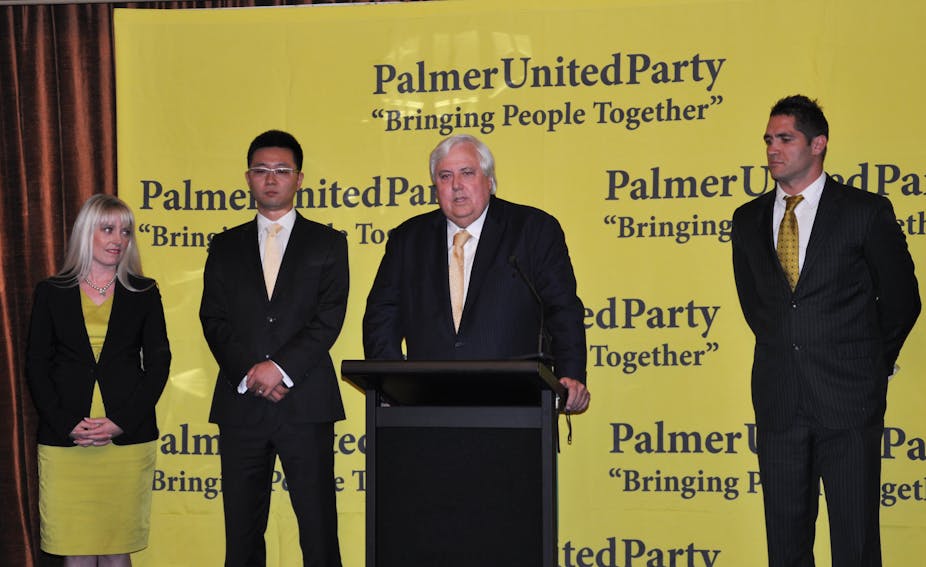Clive Palmer has secured a seat in a West Australian senate result that saw large swings against both Coalition and Labor and the Greens dramatically increase their vote.
On latest counting, the Liberals had secured two seats, Labor one, Palmer United Party one and the Greens’ Senator Scott Ludlam had retained his place. The last seat is being fought out between the Coalition and Labor’s senator Louise Pratt.
Depending on who wins this place, the overall right-left balance in the new post July 1 Senate will either be the same as produced by the September election, or the government will be one down compared with that outcome.
In September the Liberals won three WA places, while Labor had two on one count and one on the other.
The WA win gives Palmer three senators with another, from the Motoring Enthusiast Party, allied to PUP. Palmer already had significant power in the new Senate but this victory increases his clout considerably.
The challenge for the government will be to negotiate with him to get key legislation through; Palmer’s challenge will be to keep his senators united and in line.
The WA result is disastrous for Labor, whose vote was down by nearly 5% from an already low 26.6 % to 21.8 %.
This is a blow for opposition leader Bill Shorten, although some of the fall can be attributed to local factors. Labor’s lead candidate Joe Bullock, the state chief of the “shoppies” union, was widely criticised, culminating in the emergence at the end of the campaign of comments he made in November which praised Tony Abbott and cast aspersions on his running mate Pratt.
It is notable that Labor failed to pick up the protest vote on the left, which went in spades to the Greens.
The Liberals vote fell 5.5%, from 39.2% to 33.7%. While senior ministers Mathias Cormann and Julie Bishop sought to explain this as being in line with usual byelection swings, the result is a caution to the government as it prepares what will be an unpopular budget.
Whether the government can shrug off the fall will depend largely on whether it wins the third seat or loses it to Labor.
The protest vote against the government has helped Palmer whose vote increased from 5% in September to 12.5%. Palmer’s support was also bought by a multi-million dollar spend on advertising.
The increase in the Greens’ vote, from 9.5% in September to 15.9% is a boost for Greens leader Christine Milne, after her party’s vote fell in September and the Greens performed poorly in the Tasmanian election.
Who gets the final spot won’t be known until after the counting of postal and pre-poll votes.
The government campaigned on the issues of repeal of the carbon and mining taxes, which Labor and the Greens have blocked in the Senate, while Labor focused on the spectre of cuts in the coming budget, saying they would reflect the policies of the WA Barnett government, which has become unpopular.
Prime Minister Tony Abbott said the essential point of the result was that “for the third time running we’ve got a very strong vote against the carbon tax and against the mining tax”. He said the swing against the Liberals was the “kind of result you would expect in a byelection.”

